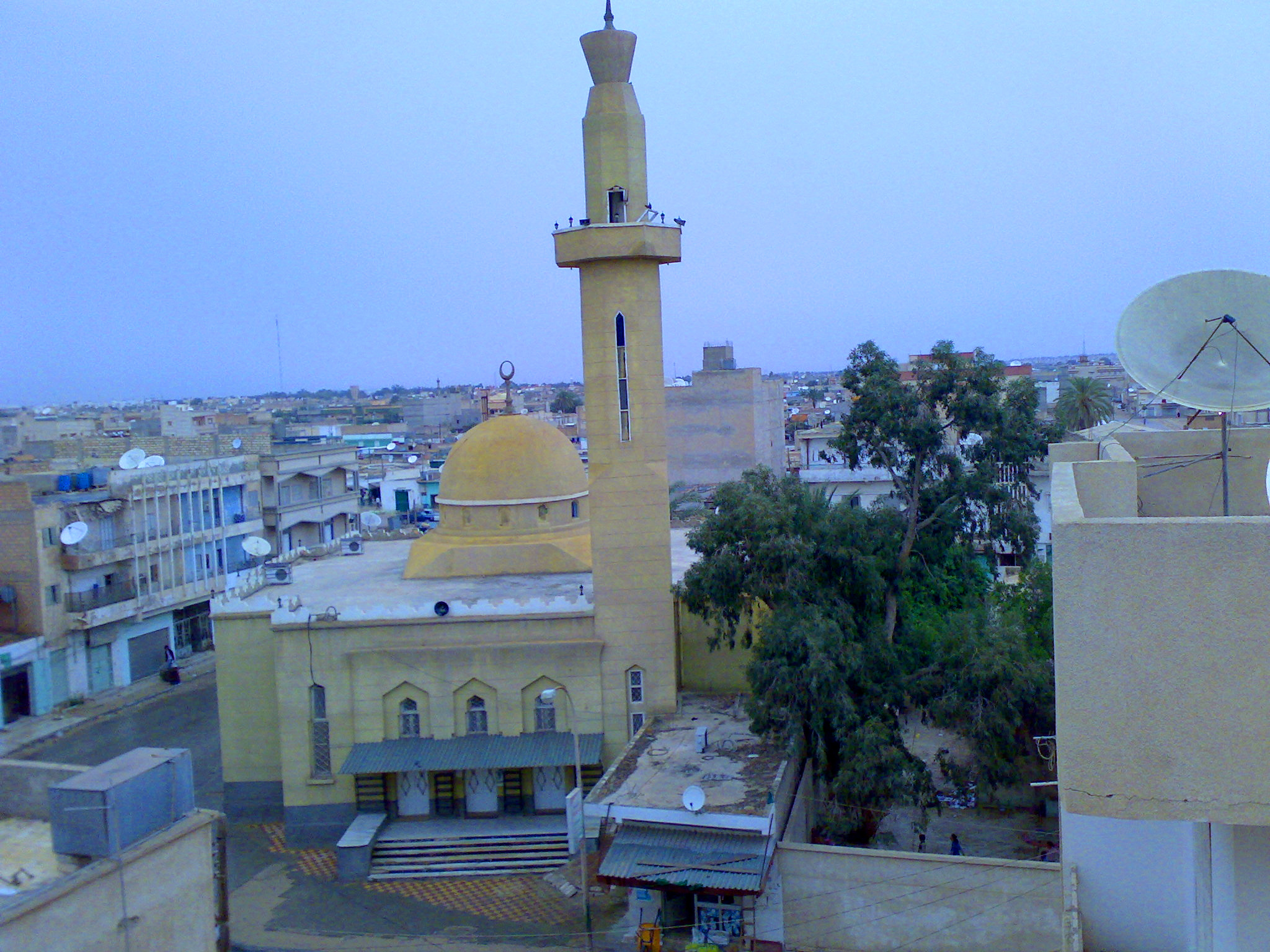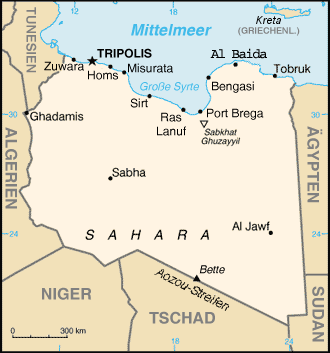|
Jalu
Jalu, Jallow, or Gialo ( ar, جالو) is a town in the Al Wahat District in northeastern Libya in the Jalo oasis. An oasis, a city, and it is the main center of the oasis region in eastern Libya. It is located at the confluence of longitude and latitude (21-29), and the most important characteristic of visitors and onlookers is the presence of dense palm forests linking the sand dunes and plateaus of the Libyan desert. Its inhabitants were famous for trade and transporting goods from Cyrenaica and Tripoli to (Chad, Egypt and Sudan) and other African countries. It is an ancient oasis mentioned by Arab travelers, and orientalists in many historical sources. Historical sources mention that the people of the Jallow oasis were the first to conduct trade caravans along the longest desert route from The Libyan coast to central and eastern Africa around the middle of the nineteenth century and the beginning of the twentieth century. Notable people * Abu-Bakr Yunis Jabr (1952-2011) ... [...More Info...] [...Related Items...] OR: [Wikipedia] [Google] [Baidu] |
Jalo Oasis
Jalo Oasis (or Jalu, or Gialo) is an oasis in Cyrenaica, Libya, located west of the Great Sand Sea and about 250 km south-east of the Gulf of Sidra. Quite large, long and up to wide, it supports a number of settlements, the largest of which is the town of Jalu. Jalu was the administrative capital of the Jalu District from 1983 to 1988, at which time the area became part of the Ajdabiya District and as of 2007 is now part of the Al Wahat District. Because of its location and as a source of water, it had strategic importance during the North African Campaign in World War II and changed hands several times between Allied and Axis forces. The water at the Jalo oasis is quite salty (3,880 parts per million).Walton, Kenneth (2007) ''The Arid Zones'' AldineTransaction, New Brunswick, New Jerseypage 109 ; originally published by Aldine Publishing Company, Chicago, in 1969, The water is an alkaline with a pH of 7.4 and is very hard with numerous dissolved salts in addition ... [...More Info...] [...Related Items...] OR: [Wikipedia] [Google] [Baidu] |
Al Wahat District
Al Wahat or The Oases ( ar, الواحات ', en, The Oases), occasionally spelt ''Al Wahad'' or ''Al Wahah'' ( en, The Oasis) is one of the districts of Libya.''Statesman's Yearbook 2006'' Its capital and largest city is Ajdabiya. The district is home to much of Libya's petroleum extraction economic activity. History Traditionally Al Wahat was the western part of Cyrenaica. With the division of Libya into ten governorates in 1963, Al Wahat became part of the Misrata Governorate. In the 1973 reorganization it became part of Al Khalji Governorate. In 1983 Al Khalji was divided into a number of baladiyat (districts), with what is now Al Wahat being included in the Ajdabiya baladiyah and the Jalu baladiyah. In the 1988 reorganization, Jalu was subsumed within Ajdabiya baladiyah. The status of the area in the reorganization of 1995 which created thirteen districts is unclear; however, in the 1998 reorganization into twenty-six districts, the name "Al-Wahad" appears as a district ... [...More Info...] [...Related Items...] OR: [Wikipedia] [Google] [Baidu] |
Abu-Bakr Yunis Jabr
Abu-Bakr Yunis Jabr ( ar, أبو بكر يونس جابر), (1940 – 20 October 2011) was the Libyan Secretary of the Libyan General Committee for Defence during the rule of Muammar Gaddafi. His official position was Secretary of the Libyan General Interim Committee for Defence. Early life and education There is disagreement about the year of Jabr's birth. According to the UN he was born in 1952 in Jalu, Libya. The German newspaper the ''Frankfurter Allgemeine Zeitung'' gives the much earlier date of 1940. Educated at the Military Academy in Benghazi, Jabr shared classes with Muammar Gaddafi. Career Later Gaddafi and Jabr became members of the Free Officers Movement which on 1 September 1969 removed King Idris from power in a bloodless coup and brought Gaddafi to power. Jabr was the head of the Libyan Army from the 1970s and was one of the original members of the 12 army officials of the Revolutionary Command Council led by Gaddafi. He, Gaddafi and the other surviving m ... [...More Info...] [...Related Items...] OR: [Wikipedia] [Google] [Baidu] |
Vehicle Registration Plates Of Libya
Libya requires its residents to register their motor vehicles and display vehicle registration plates. Current plates are European standard 520 mm × 110 mm. Current Series Libya's current series of license plates entered circulation in 2013, after Libyan Revolution and the overthrow of Gaddafi. Numbers on license plates are in Latin Alphabet, and all plates carry the Arabic text ليبيا meaning ''Libya'', in Naskh Script, either on the right hand side or the right top corner. Private Vehicles Private vehicle license plates are black on white and follow the format ''# - 1 to 999999 The First number (#), a 1 or 2 digit number consists of a code corresponding to Municipality in Libya. This number is separated by a dash from the registration code, which can be 1 to 6 digits. In the city of Tripoli, due to its larger population, 7-digit registration codes are also issued. Foreigner-owned Private Vehicles Foreigner-owned Private vehicle license plates are black on w ... [...More Info...] [...Related Items...] OR: [Wikipedia] [Google] [Baidu] |
List Of Cities In Libya ...
This is a list of the 100 largest populated places in Libya. Some places in the list could be considered suburbs or neighborhoods of some large cities in the list, so this list is not definitive. ''Source:Amraja M. el Khajkhaj, "Noumou al Mudon as Sagheera fi Libia", Dar as Saqia, Benghazi-2008, pp. 118-123.'' See also * Transliteration of Libyan placenames *List of metropolitan areas in Africa *List of largest cities in the Arab world References External links * {{List of cities in the Middle East Libya, List of cities in Libya Cities A city is a human settlement of notable size.Goodall, B. (1987) ''The Penguin Dictionary of Human Geography''. London: Penguin.Kuper, A. and Kuper, J., eds (1996) ''The Social Science Encyclopedia''. 2nd edition. London: Routledge. It can be def ... [...More Info...] [...Related Items...] OR: [Wikipedia] [Google] [Baidu] |
Cyrenaica
Cyrenaica ( ) or Kyrenaika ( ar, برقة, Barqah, grc-koi, Κυρηναϊκή ��παρχίαKurēnaïkḗ parkhíā}, after the city of Cyrene), is the eastern region of Libya. Cyrenaica includes all of the eastern part of Libya between longitudes E16 and E25, including the Kufra District. The coastal region, also known as '' Pentapolis'' ("Five Cities") in antiquity, was part of the Roman province of Crete and Cyrenaica, later divided into ''Libya Pentapolis'' and ''Libya Sicca''. During the Islamic period, the area came to be known as ''Barqa'', after the city of Barca. Cyrenaica became an Italian colony in 1911. After the 1934 formation of Libya, the Cyrenaica province was designated as one of the three primary provinces of the country. During World War II, it fell under British military and civil administration from 1943 until 1951, and finally in the Kingdom of Libya from 1951 until 1963. The region that used to be Cyrenaica officially until 1963 has formed seve ... [...More Info...] [...Related Items...] OR: [Wikipedia] [Google] [Baidu] |
Districts Of Libya
In Libya there are currently 106 districts, second level administrative subdivisions known in Arabic as ''baladiyat'' (singular ''baladiyah''). The number has varied since 2013 between 99 and 108. The first level administrative divisions in Libya are currently the governorates (''muhafazat''), which have yet to be formally deliniated, but which were originally tripartite as: Tripolitania in the northwest, Cyrenaica in the east, and Fezzan in the southwest; and later divided into ten governorates. Prior to 2013 there were twenty-two first level administrative subdivisions known by the term ''shabiyah'' (Arabic singular ''šaʿbiyya'', plural ''šaʿbiyyāt'') which constituted the districts of Libya. In the 1990s the shabiyat had replaced an older baladiyat system. Historically the area of Libya was considered three provinces (or states), Tripolitania in the northwest, Cyrenaica in the east, and Fezzan in the southwest. It was the conquest by Italy in the Italo-Turkish War ... [...More Info...] [...Related Items...] OR: [Wikipedia] [Google] [Baidu] |
Eastern European Time
Eastern European Time (EET) is one of the names of UTC+02:00 time zone, 2 hours ahead of Coordinated Universal Time. The zone uses daylight saving time, so that it uses UTC+03:00 during the summer. A number of African countries use UTC+02:00 all year long, where it is called Central Africa Time (CAT), although Egypt and Libya also use the term ''Eastern European Time''. The most populous city in the Eastern European Time zone is Cairo, with the most populous EET city in Europe being Athens. Usage The following countries, parts of countries, and territories use Eastern European Time all year round: * Egypt, since 21 April 2015; used EEST ( UTC+02:00; UTC+03:00 with daylight saving time) from 1988–2010 and 16 May–26 September 2014. See also Egypt Standard Time. * Kaliningrad Oblast (Russia), since 26 October 2014; also used EET in years 1945 and 1991–2011. See also Kaliningrad Time. * Libya, since 27 October 2013; switched from Central European Time, which was u ... [...More Info...] [...Related Items...] OR: [Wikipedia] [Google] [Baidu] |
Libya
Libya (; ar, ليبيا, Lībiyā), officially the State of Libya ( ar, دولة ليبيا, Dawlat Lībiyā), is a country in the Maghreb region in North Africa. It is bordered by the Mediterranean Sea to the north, Egypt to Egypt–Libya border, the east, Sudan to Libya–Sudan border, the southeast, Chad to Chad–Libya border, the south, Niger to Libya–Niger border, the southwest, Algeria to Algeria–Libya border, the west, and Tunisia to Libya–Tunisia border, the northwest. Libya is made of three historical regions: Tripolitania, Fezzan, and Cyrenaica. With an area of almost 700,000 square miles (1.8 million km2), it is the fourth-largest country in Africa and the Arab world, and the List of countries and outlying territories by total area, 16th-largest in the world. Libya has the List of countries by proven oil reserves, 10th-largest proven oil reserves in the world. The largest city and capital, Tripoli, Libya, Tripoli, is located in western Libya and contains over ... [...More Info...] [...Related Items...] OR: [Wikipedia] [Google] [Baidu] |
Tripolitania
Tripolitania ( ar, طرابلس '; ber, Ṭrables, script=Latn; from Vulgar Latin: , from la, Regio Tripolitana, from grc-gre, Τριπολιτάνια), historically known as the Tripoli region, is a historic region and former province of Libya. The region had been settled since antiquity, first coming to prominence as part of the Carthaginian empire. Following the defeat of Carthage in the Punic Wars, Ancient Rome organized the region (along with what is now modern day Tunisia and eastern Algeria), into a province known as Africa, and placed it under the administration of a proconsul. During the Diocletian reforms of the late 3rd century, all of North Africa was placed into the newly created Diocese of Africa, of which Tripolitania was a constituent province. After the Fall of the Western Roman Empire in the 5th century, Tripolitania changed hands between the Vandals and the Byzantine Empire, until it was taken during the Muslim conquest of the Maghreb in the 8th centu ... [...More Info...] [...Related Items...] OR: [Wikipedia] [Google] [Baidu] |
Chad
Chad (; ar, تشاد , ; french: Tchad, ), officially the Republic of Chad, '; ) is a landlocked country at the crossroads of North and Central Africa. It is bordered by Libya to the north, Sudan to the east, the Central African Republic to the south, Cameroon to the southwest, Nigeria to the southwest (at Lake Chad), and Niger to the west. Chad has a population of 16 million, of which 1.6 million live in the capital and largest city of N'Djamena. Chad has several regions: a desert zone in the north, an arid Sahelian belt in the centre and a more fertile Sudanian Savanna zone in the south. Lake Chad, after which the country is named, is the second-largest wetland in Africa. Chad's official languages are Arabic and French. It is home to over 200 different ethnic and linguistic groups. Islam (55.1%) and Christianity (41.1%) are the main religions practiced in Chad. Beginning in the 7th millennium BC, human populations moved into the Chadian basin in great numbe ... [...More Info...] [...Related Items...] OR: [Wikipedia] [Google] [Baidu] |
Egypt
Egypt ( ar, مصر , ), officially the Arab Republic of Egypt, is a transcontinental country spanning the northeast corner of Africa and southwest corner of Asia via a land bridge formed by the Sinai Peninsula. It is bordered by the Mediterranean Sea to the north, the Gaza Strip of Palestine and Israel to the northeast, the Red Sea to the east, Sudan to the south, and Libya to the west. The Gulf of Aqaba in the northeast separates Egypt from Jordan and Saudi Arabia. Cairo is the capital and largest city of Egypt, while Alexandria, the second-largest city, is an important industrial and tourist hub at the Mediterranean coast. At approximately 100 million inhabitants, Egypt is the 14th-most populated country in the world. Egypt has one of the longest histories of any country, tracing its heritage along the Nile Delta back to the 6th–4th millennia BCE. Considered a cradle of civilisation, Ancient Egypt saw some of the earliest developments of writing, agriculture, ur ... [...More Info...] [...Related Items...] OR: [Wikipedia] [Google] [Baidu] |





